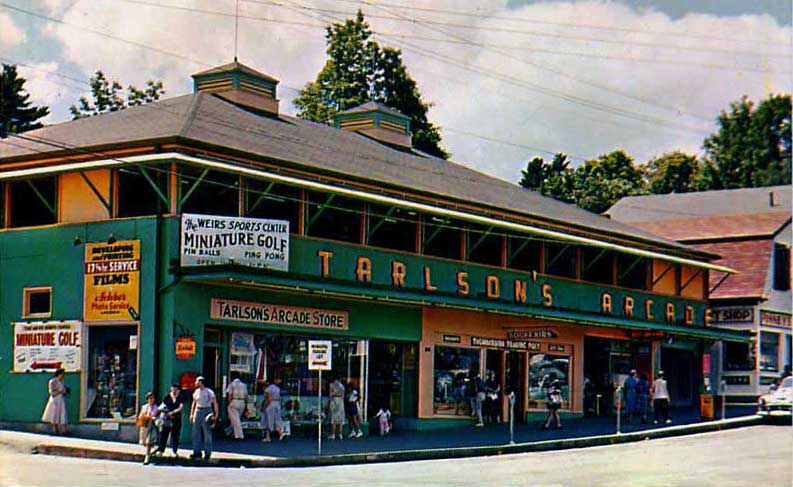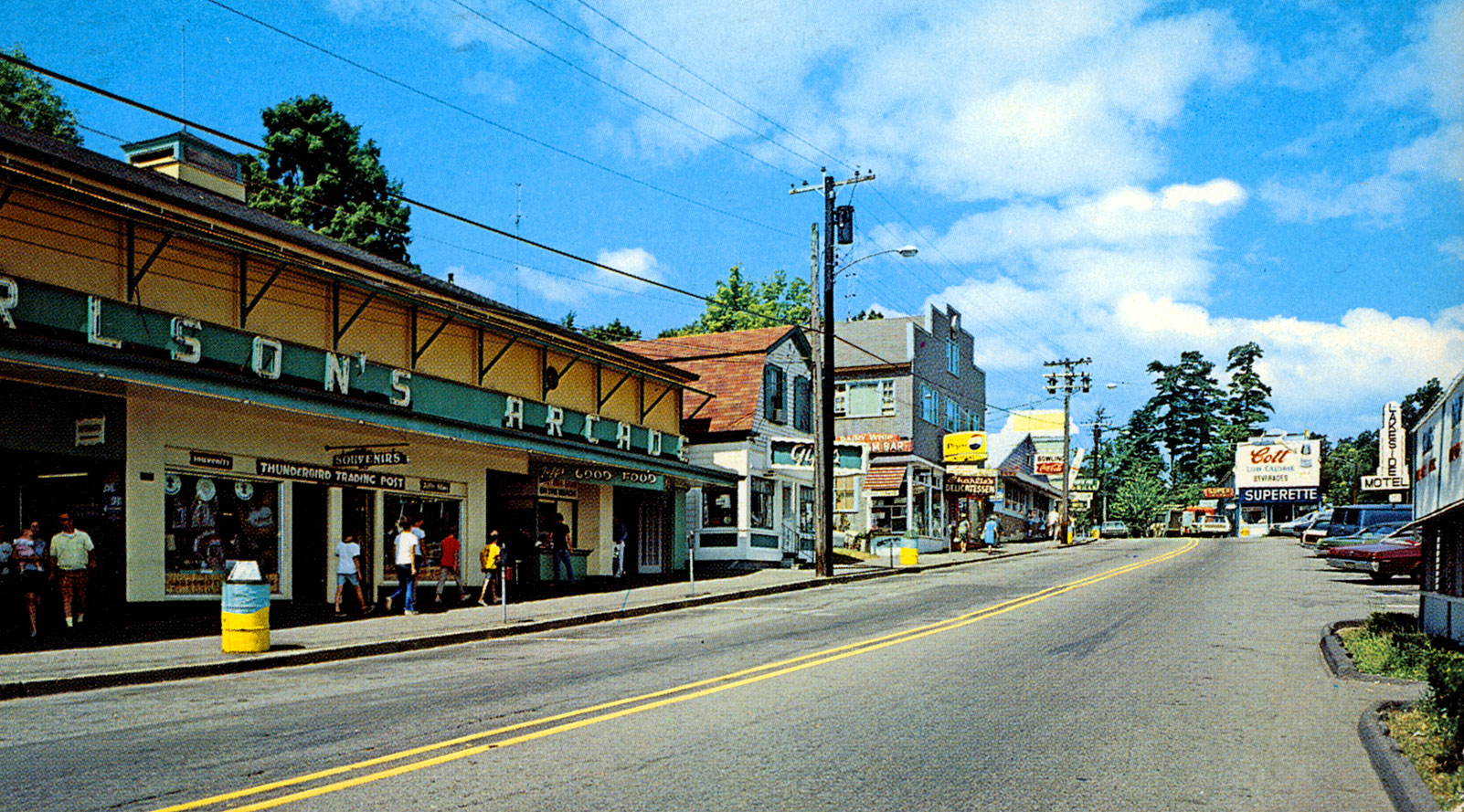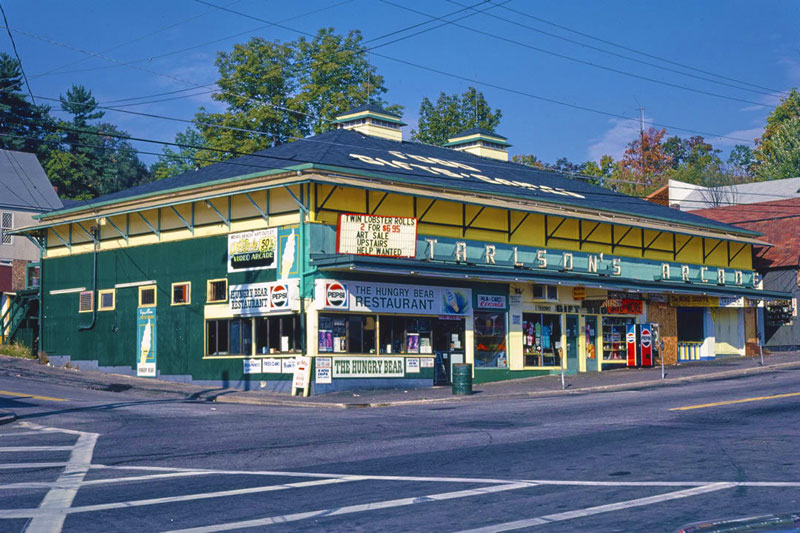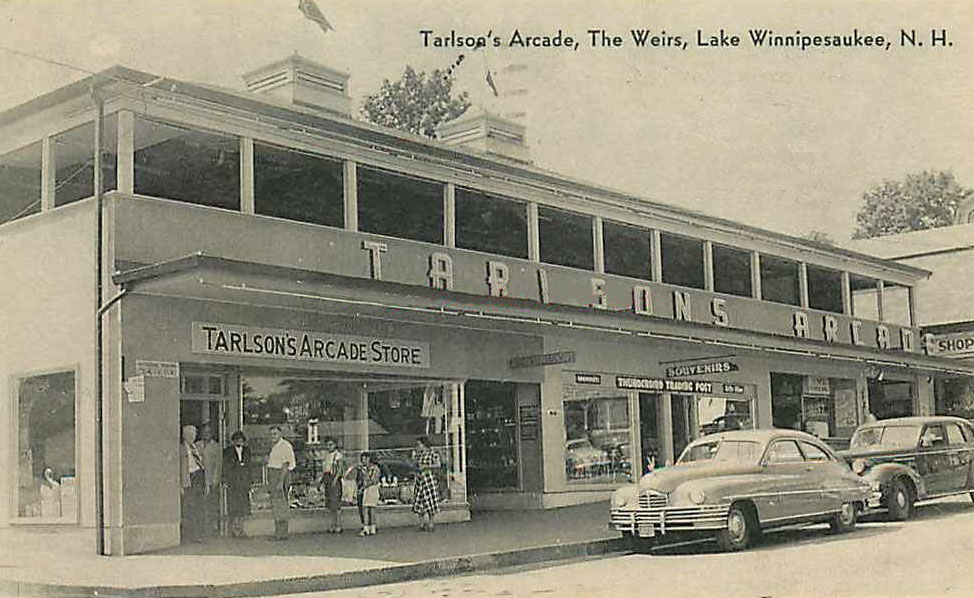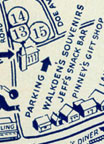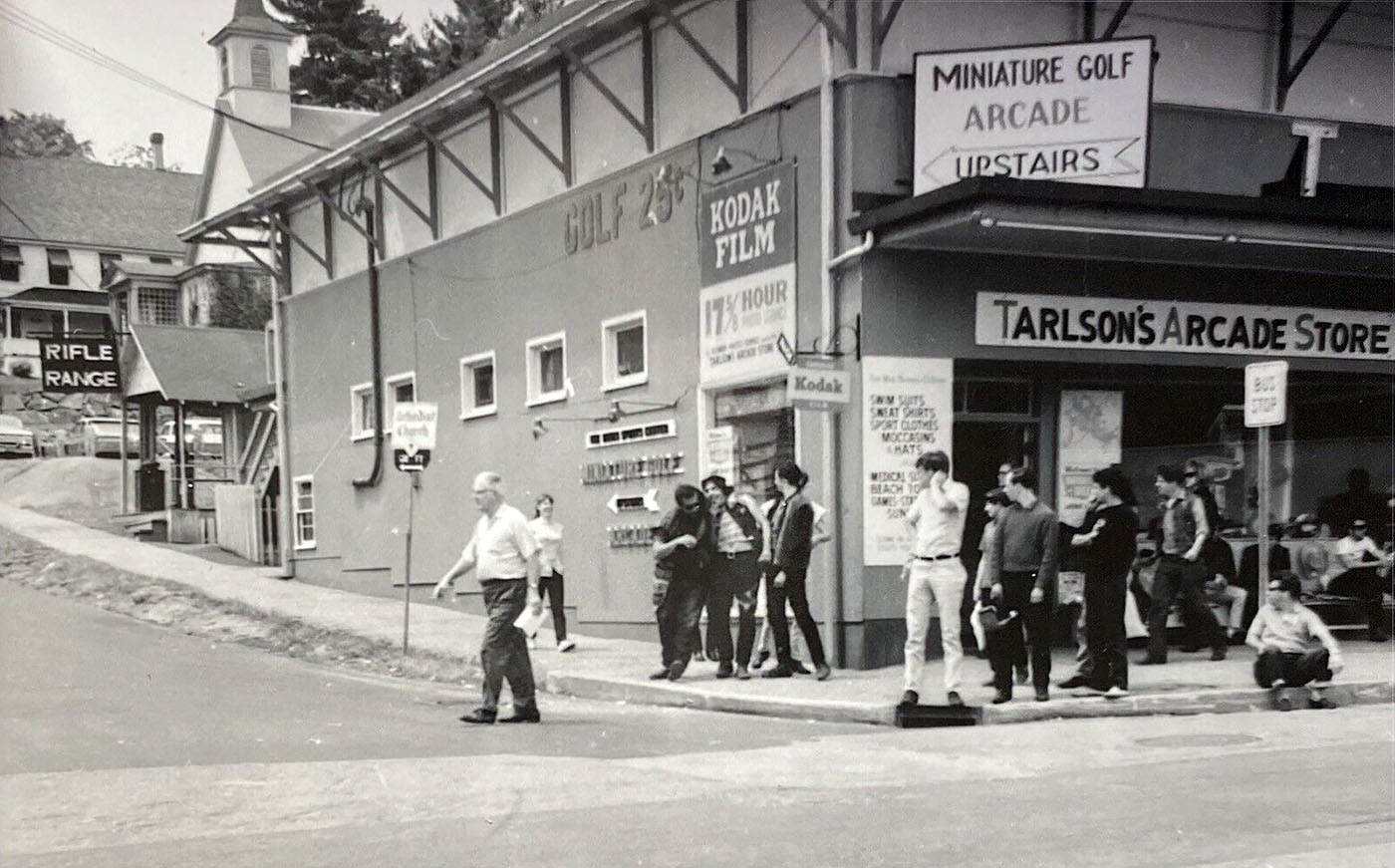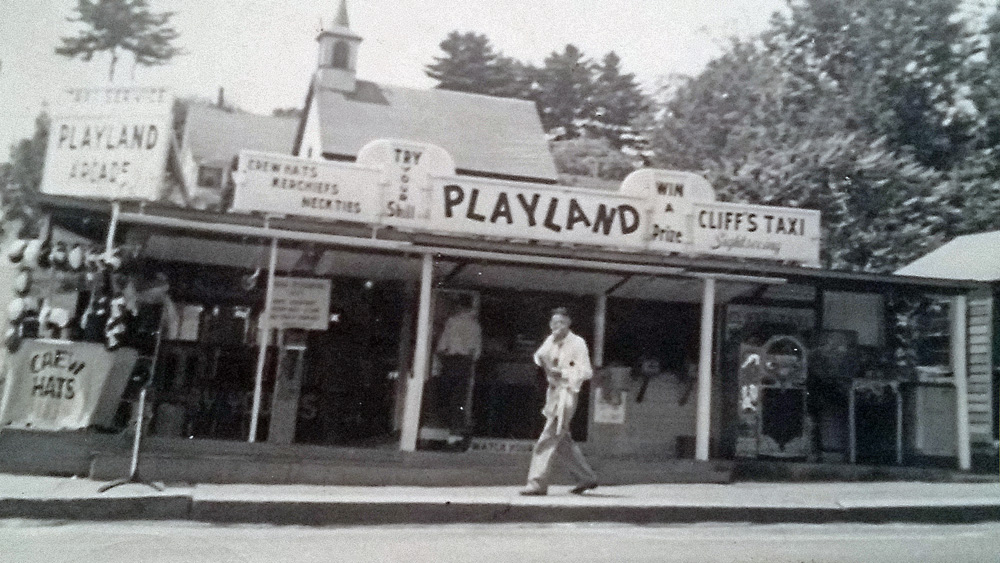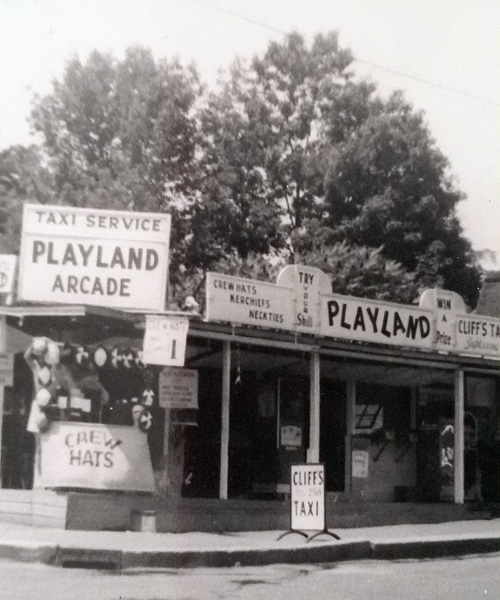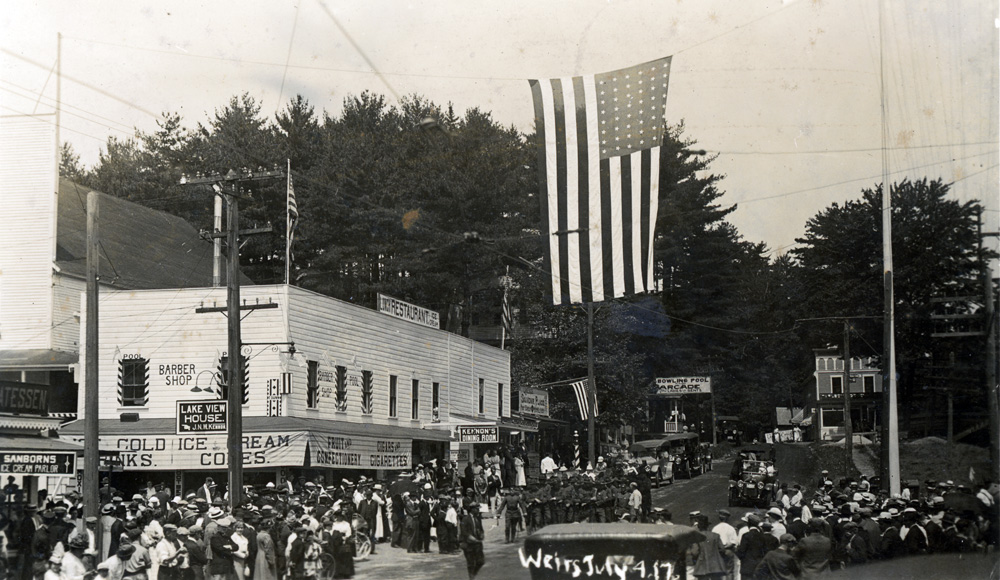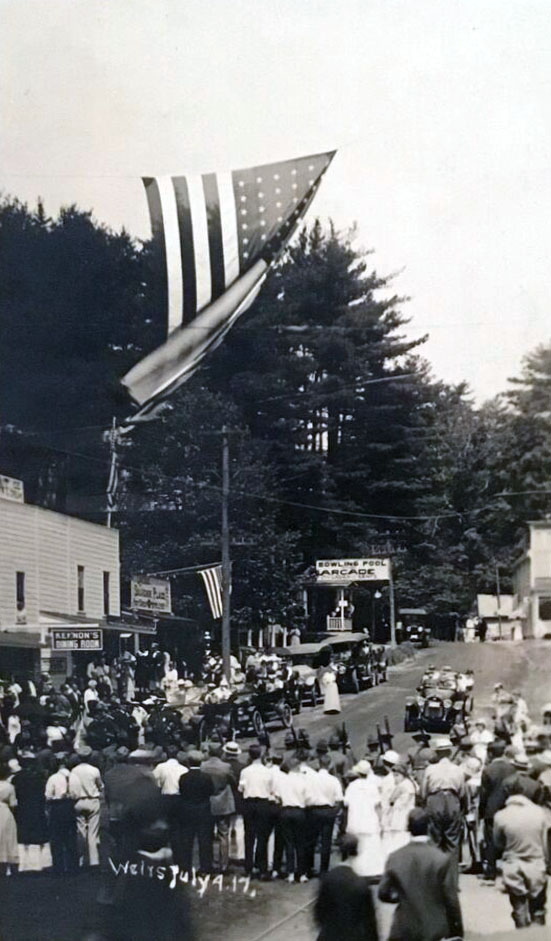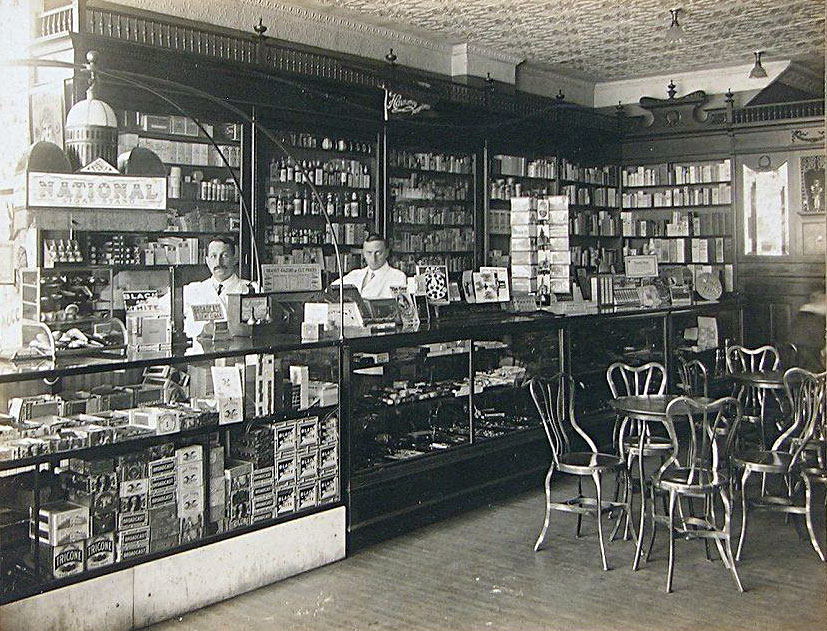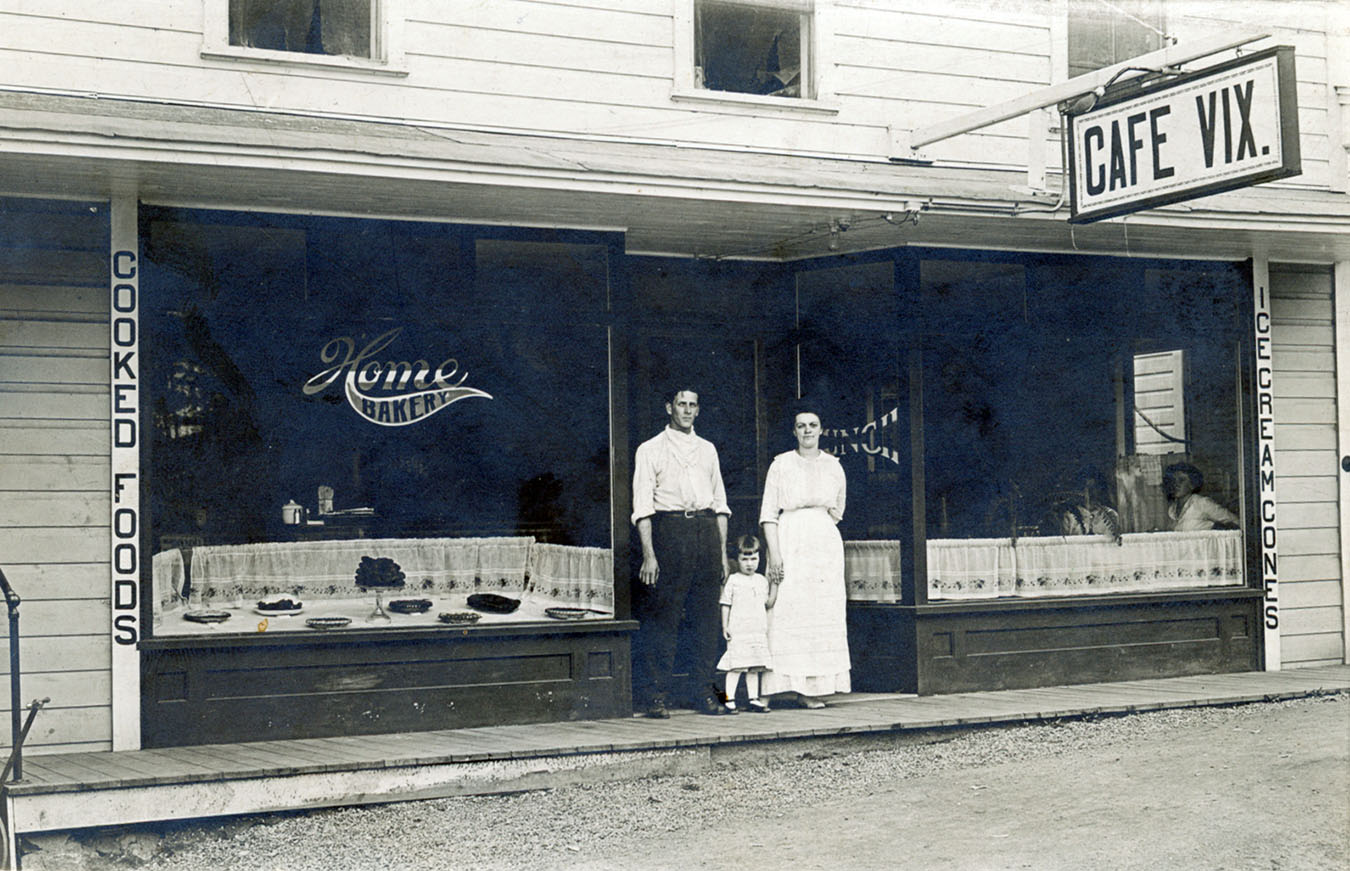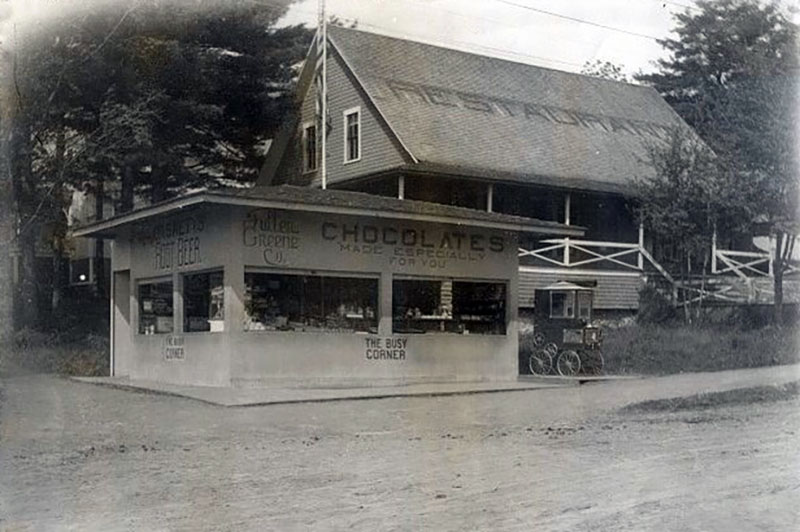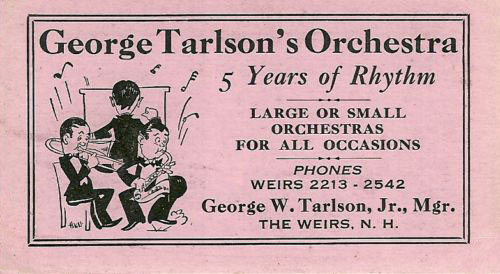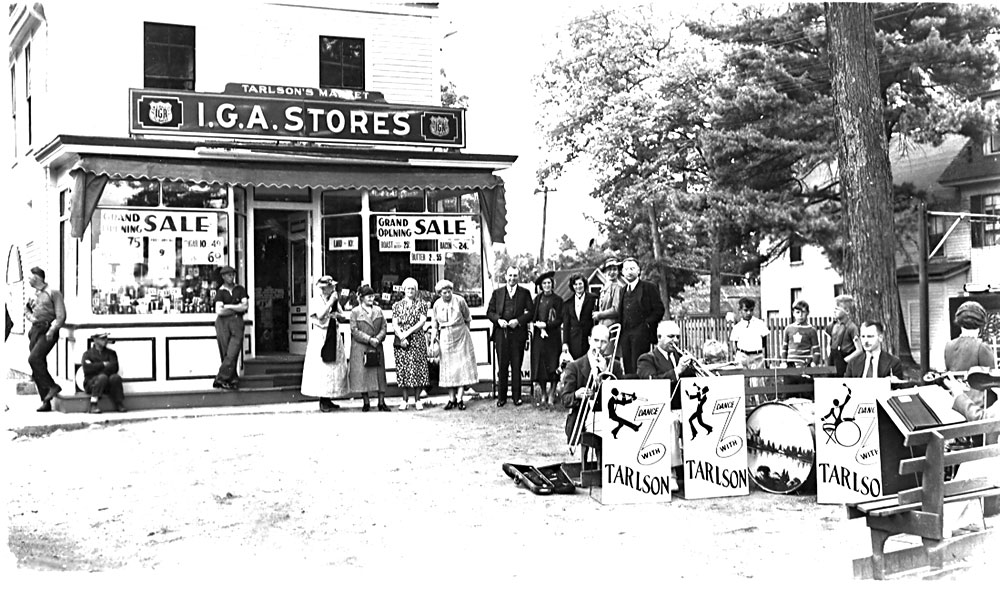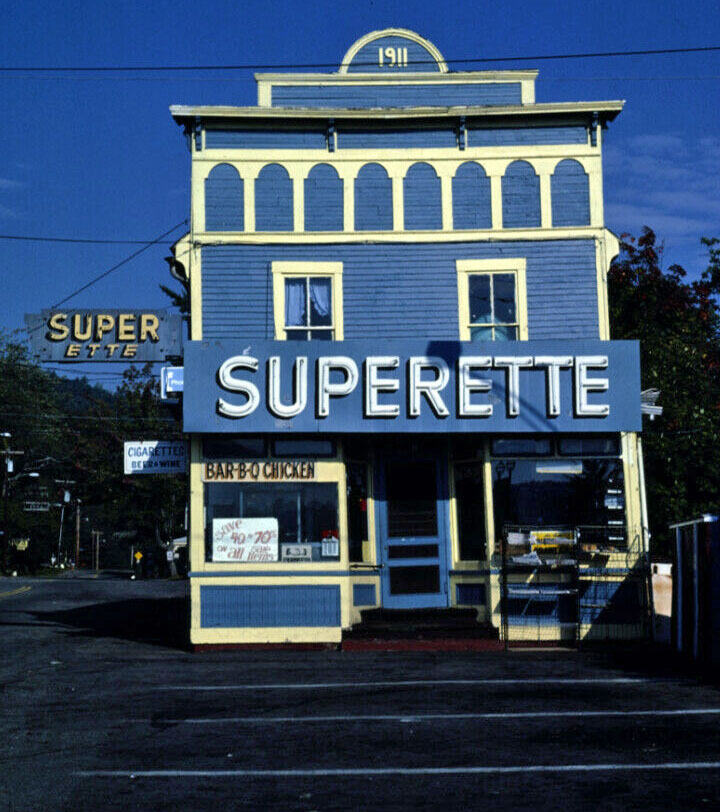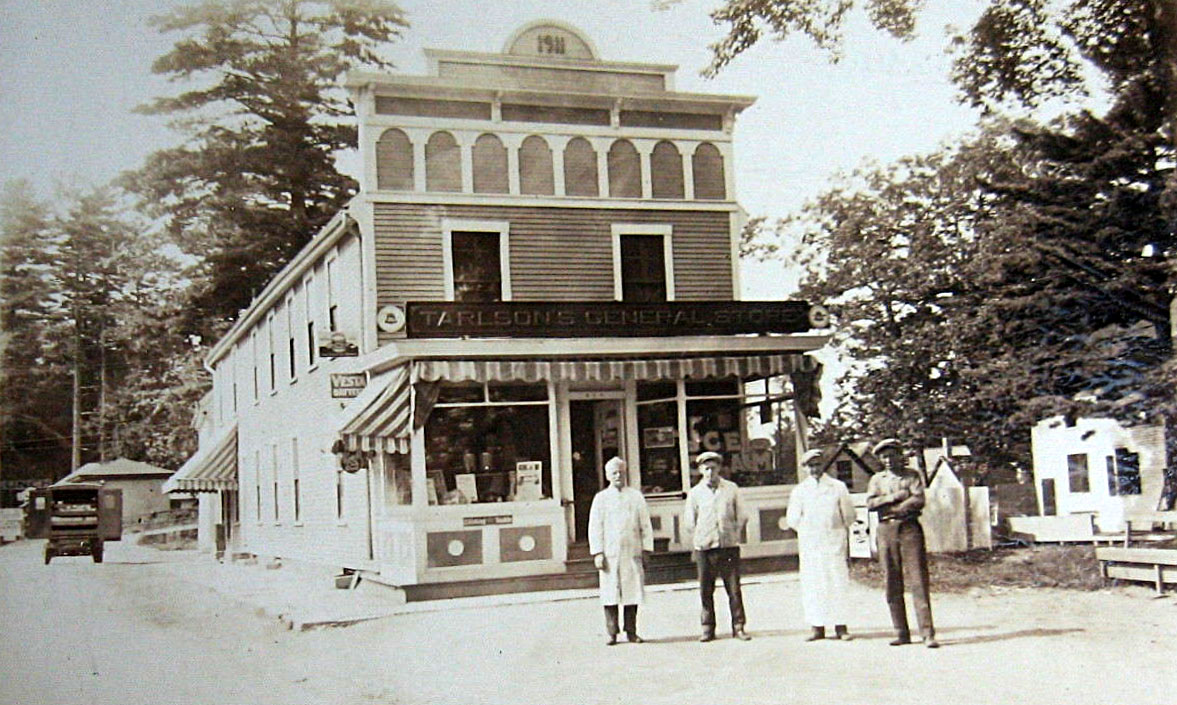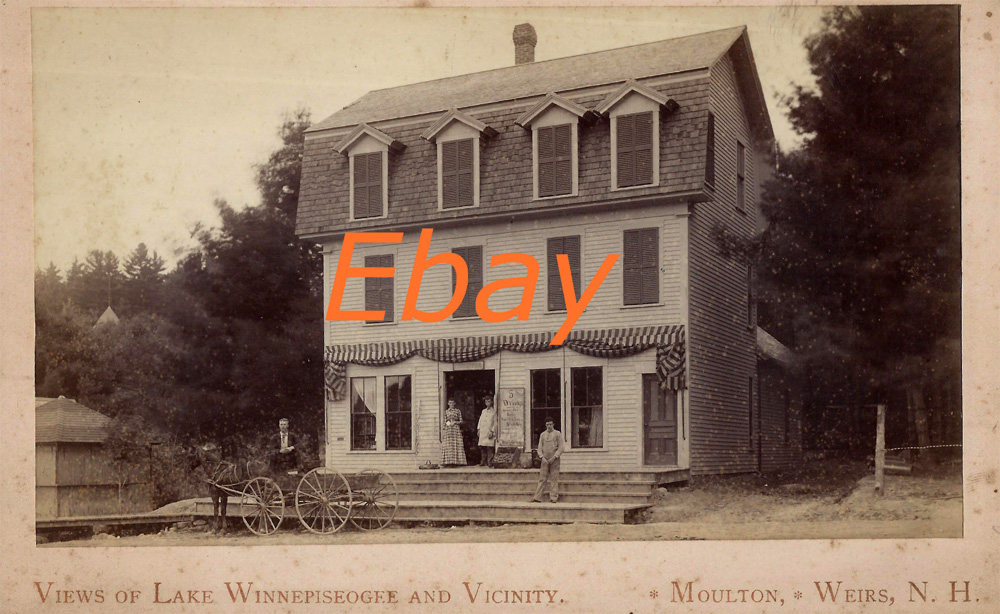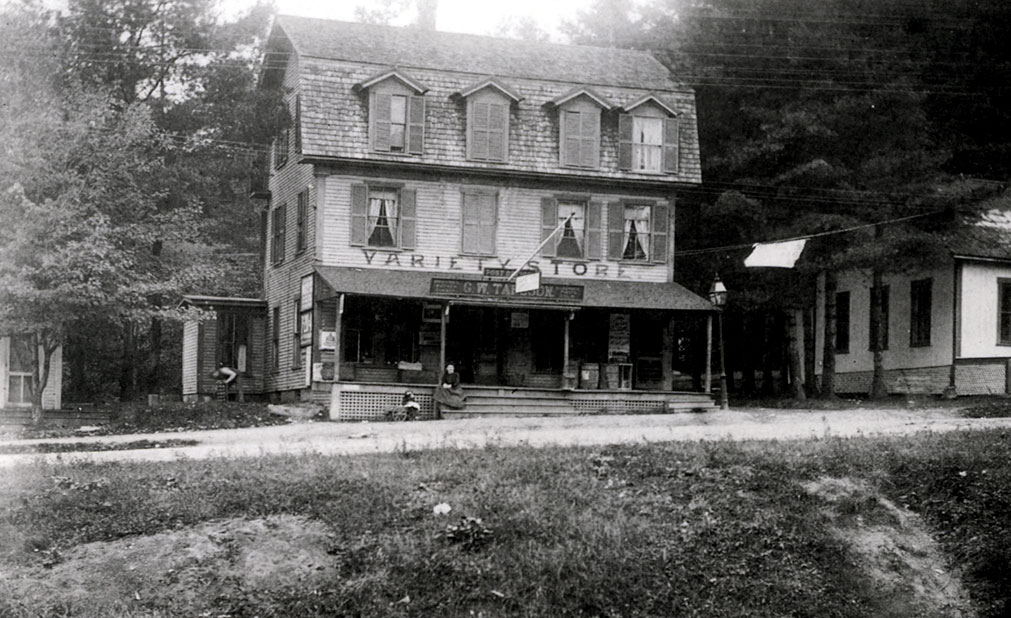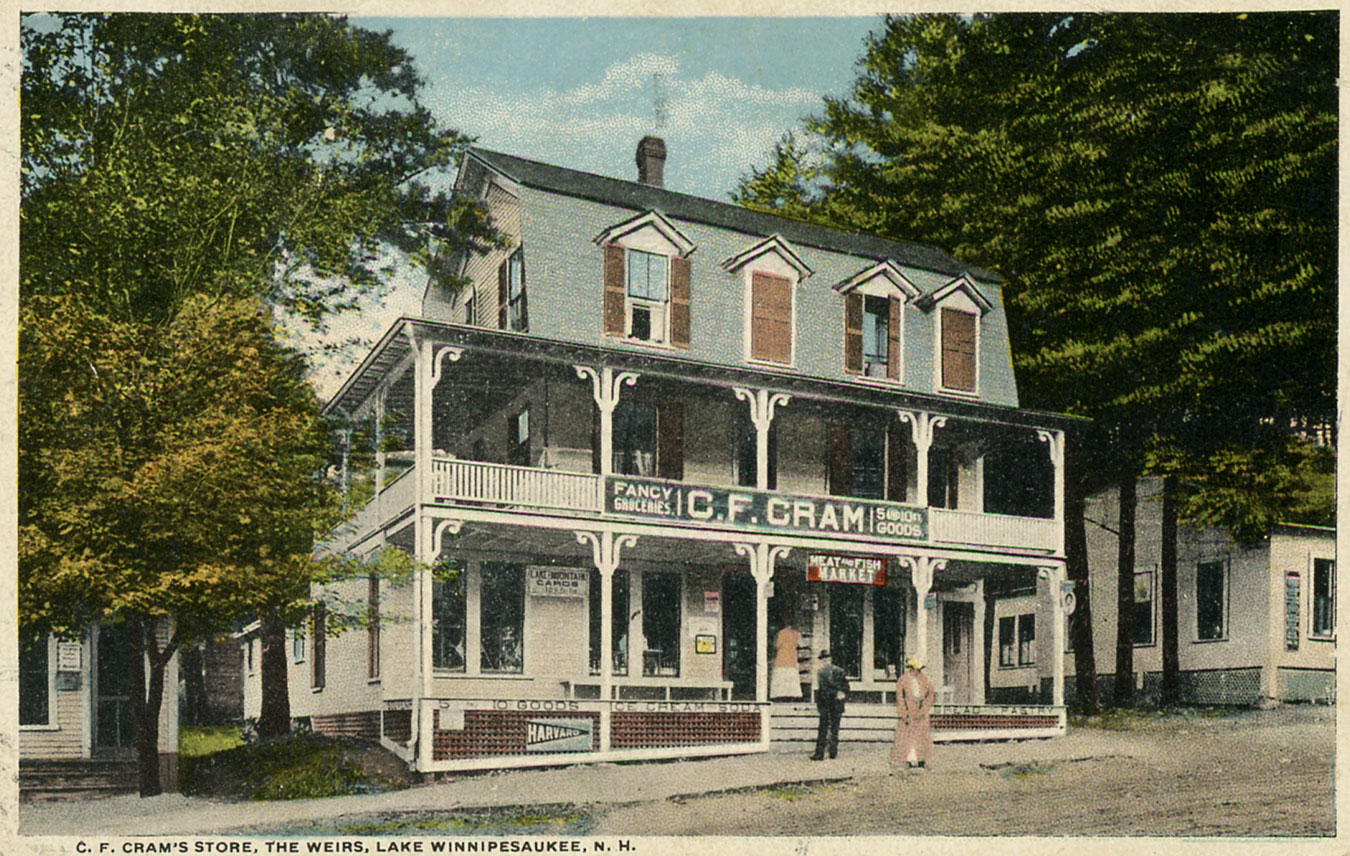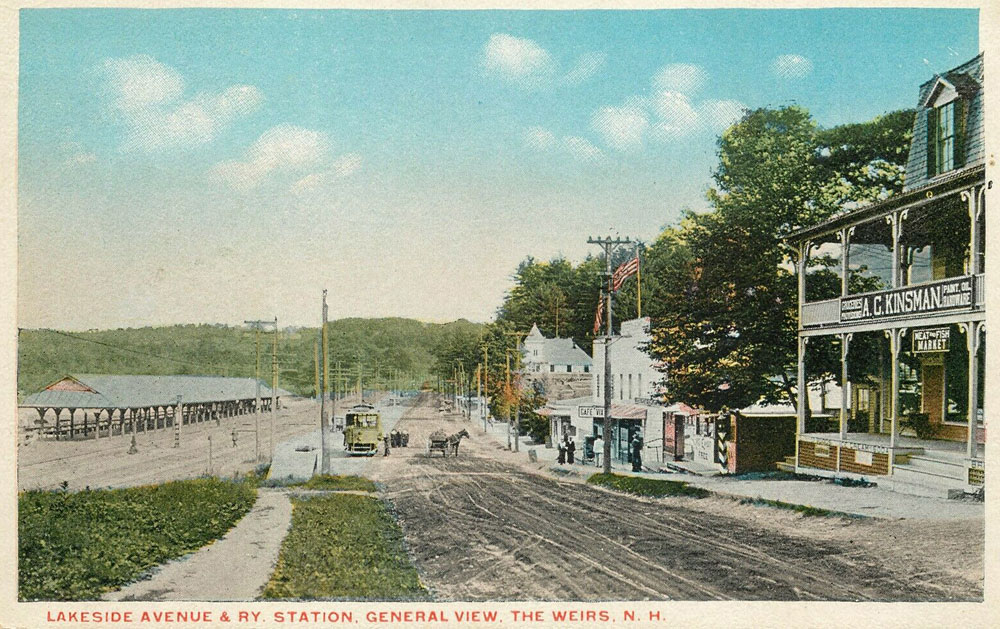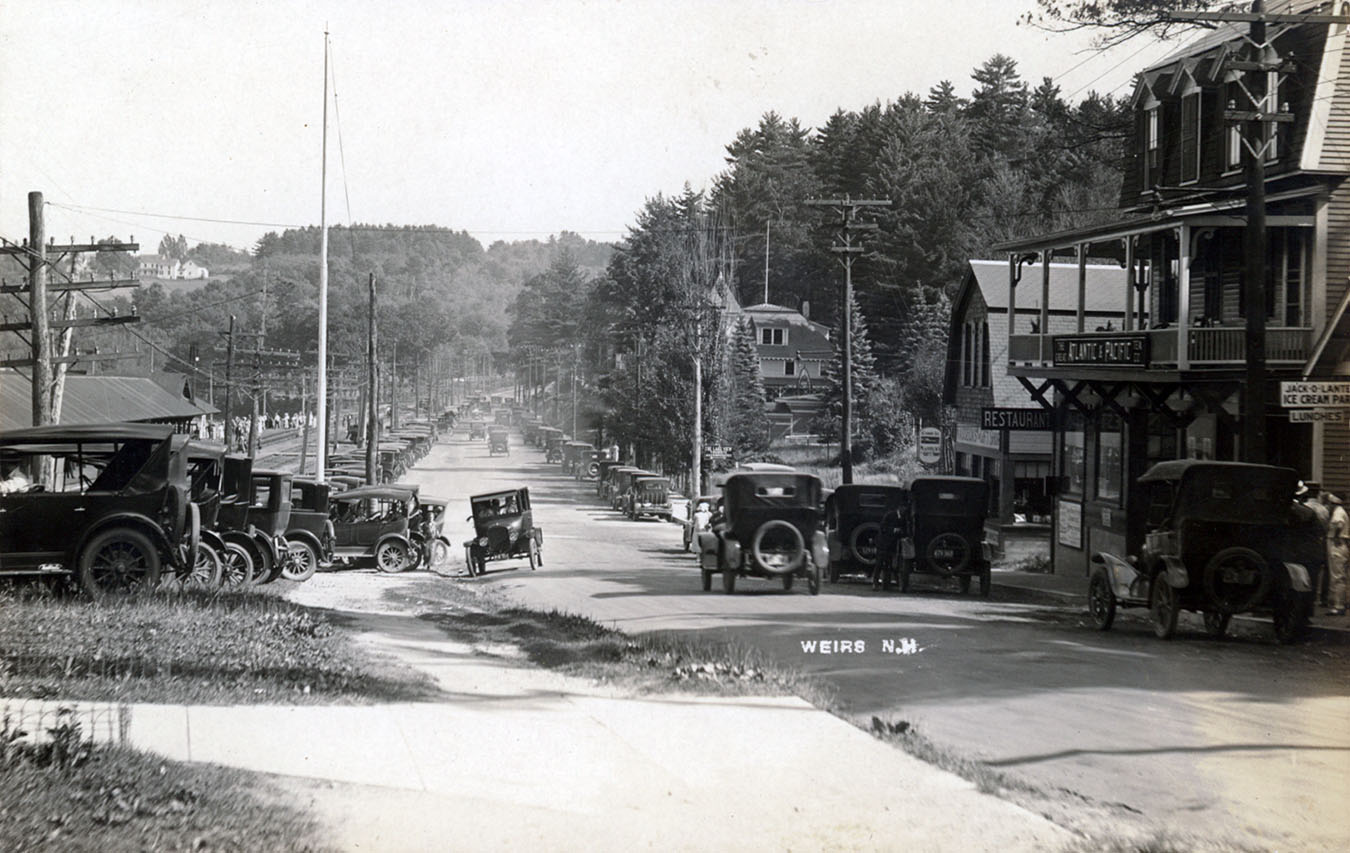Tarlson’s Arcade
Tarlson’s Arcade circa 1960. The Weirs Sports Center occupied the top floor of the building. Entrance to the Sports Center was from the rear of the building, via a footbridge from the parking lot. The Weirs Sports Center was the predecessor to Funspot. Robert Lawton, owner of Funspot, opened his arcade on the top floor of the Tarlson building on June 30, 1952. It was not until the early 1970’s that Lawton moved his arcade to its present location on Route 3. Since 2010, the building has been the Tower Hill Tavern, which has expanded into an entertainment complex with several live music stages and bars. Pinney’s Gift Shop, partly visible on the right of the photo, is now the Sports Bar at the Tavern.
Tarlson’s Arcade in the early 1960s. On the left side of the street, the last sign in the distance (a green sign just past the bowling pin) was the sign for the Knotty Pine Grill. On the right, note the large sign for the Lakeside Motel, which was reached via a pedestrian footbridge, out of sight to the right. None of the businesses in this photo still exist, but the buildings are all still there, with the exception of the Knotty Pine, which burned down in 1985, and the diner, which was replaced in 2004. (The diner is the building in the lower right foreground, only a small part of which can be seen.)
Playland Arcade
Kennon’s Restaurant
Busy Corner – Cafe Vix
Weirs Candy Kitchen
Tarlson The Musician
The Superette
Below, an early 1930s photo of Tarlson’s band, performing outdoors for the grand opening of the I.G.A. (Independent Grocers Alliance) version of the store. A violinist (on the far right) has subbed for the sax player. The store was sold in 1956 to George Casana, who changed the name to the Superette (see photo), which name the store kept through 1984. The building is now the Compass Cafe.
Tarlson’s Store
Tarlson’s father George W. Tarlson had previously owned the other general store in Weirs Beach, which was just a little down Lakeside Avenue, and on the other side of the street. That store went through a variety of ownerships, seen in the photos below. George W. Weeks built the store (the 1st photo) and sold it to George W. Tarlson in 1895 (the 2nd photo). Tarlson later sold it to C.F. Cram (3rd photo), who sold it to Arthur C. Kinsman (4th photo). After Kinsman, it became part of the vast A&P grocery store chain (bottom photo). The store building burned down in the mid-to-late 1950s.
The building was replaced. In the early 1970’s, the new building housed two businesses side-by-side on the ground floor. On the left side was Charlie’s Luncheonette, and on the right, the Xanadu head shop. Around 1980, both businesses were replaced by Nothin’ Fancy, a Mexican restaurant. Around 2000, the restaurant changed its name to the Crazy Gringo, the current establishment.










